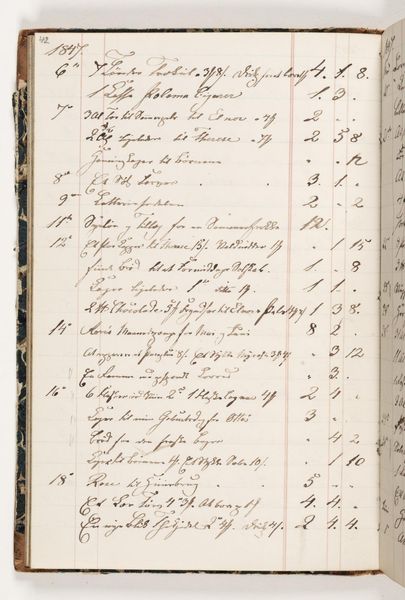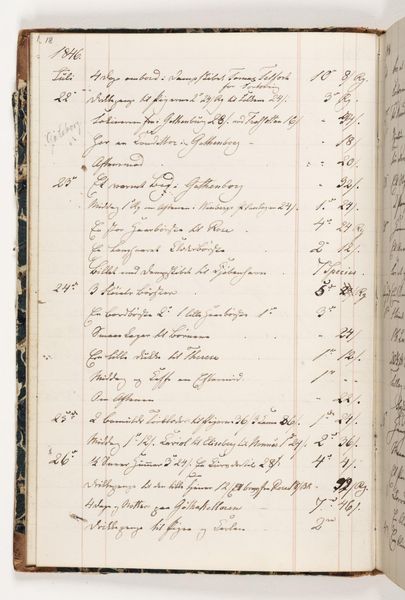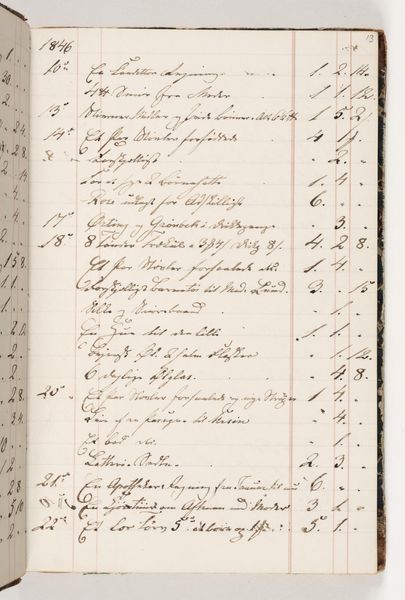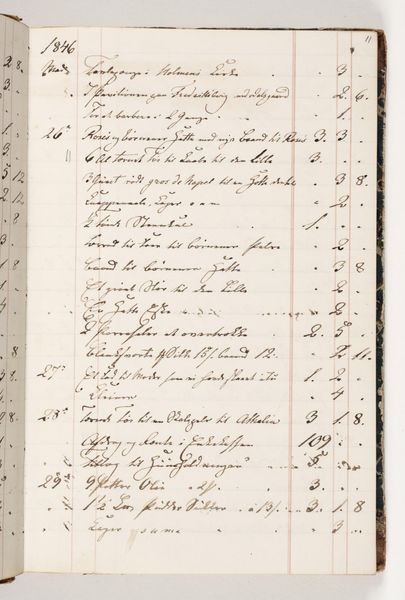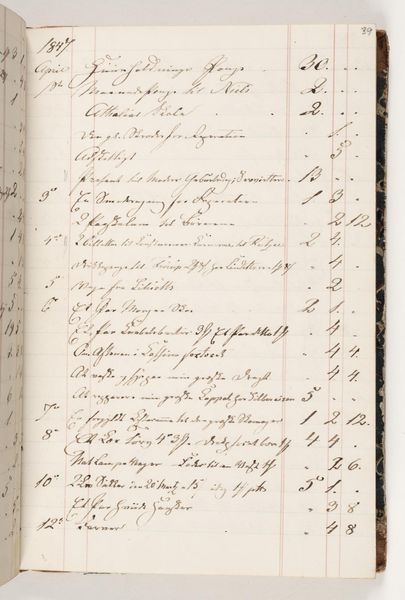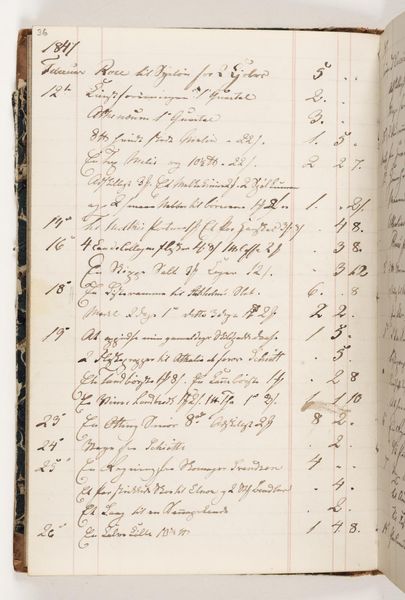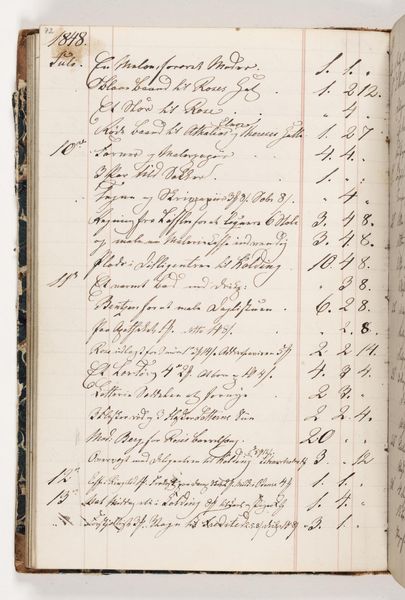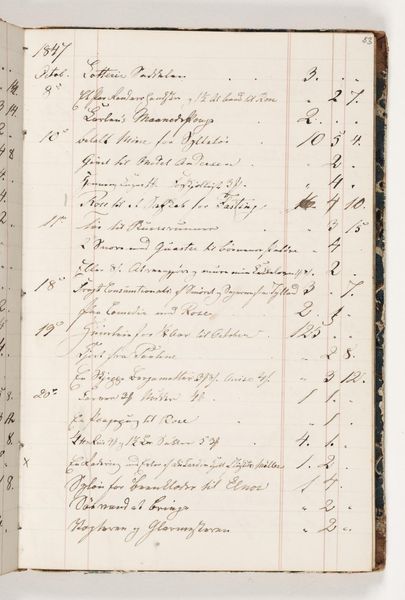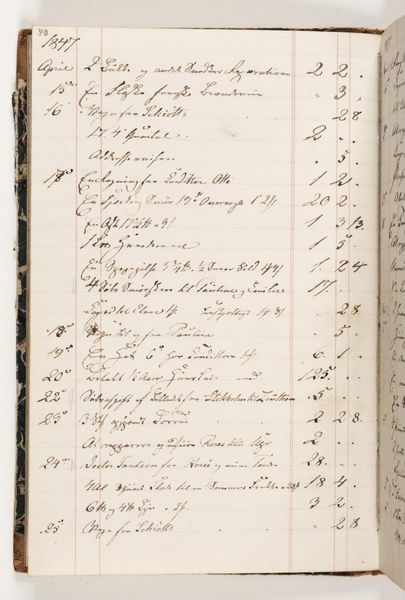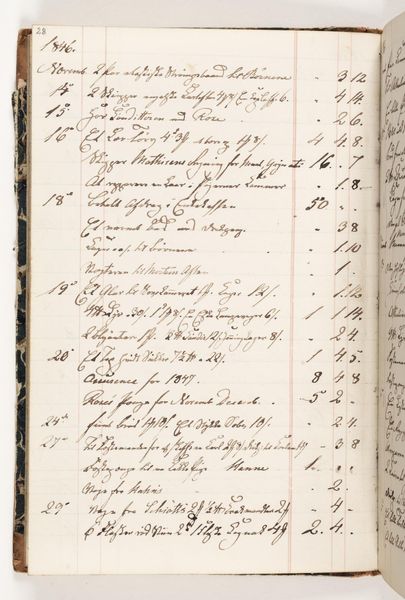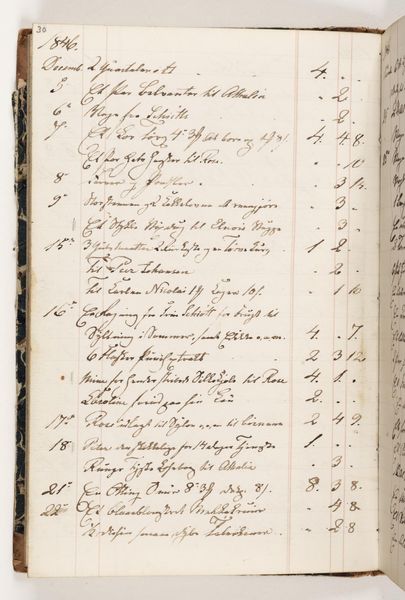
drawing, paper, ink
#
drawing
#
paper
#
ink
Dimensions: 200 mm (height) x 130 mm (width) (bladmaal)
Curator: Martinus Rørbye created "Regnskab 1846"—"Account 1846"—in, unsurprisingly, 1846. It's an ink drawing on paper held at the SMK, the National Gallery of Denmark. The work presents neat rows of handwriting in old Danish script on a heavily lined page. What strikes you about it at first glance? Editor: Honestly? Overwhelming order. There's an unexpected sense of precision. It feels both familiar and incredibly distant because I cannot comprehend this type of bookkeeping, a strange dance of familiarity and alienation. Curator: Exactly. And Rørbye was meticulous. This is a page from his personal financial record. Think of this account as more than just numbers; consider the economic forces, social conditions, and even gendered expectations of the time impacting someone's artistic practice. How do artists fund their lives and navigate financial structures, even today? Editor: The material is what catches my attention now; paper and ink - materials laden with socio-cultural importance that far surpass their practical application. How many treatises, laws, and rebellions are made visible using this medium? Curator: And each entry—small expenses or perhaps payments—becomes a small historical marker, documenting Rørbye's life and the broader economy. Editor: The use of script, especially historical script, almost immediately elevates this to art because handwriting today lacks that type of legibility, turning an everyday record into something stylized and refined. It raises fascinating questions of labor, visibility, and financial precarity for those excluded from these ledgers or able to produce such legible text. Curator: Indeed, this ledger isn't just an object of commerce but a snapshot of cultural values surrounding documentation, finances, and artistic expression. It provides insights that challenge prevailing views about social stratifications of 1846 through an accessible medium and recognizable genre of mark-making. Editor: So, while at first glance, it's just accounting, it pushes us to consider historical context and artistic choice far more deeply. Curator: Precisely. And that deeper investigation offers insight into societal norms as seen from our vantage point.
Comments
No comments
Be the first to comment and join the conversation on the ultimate creative platform.
